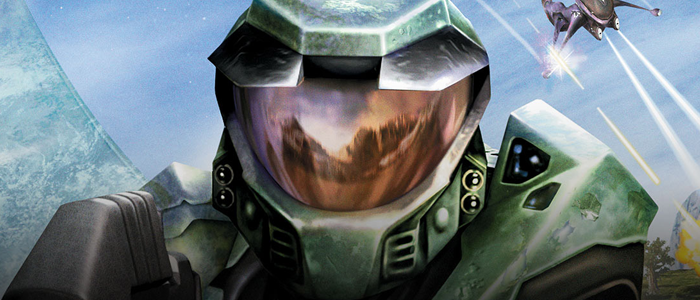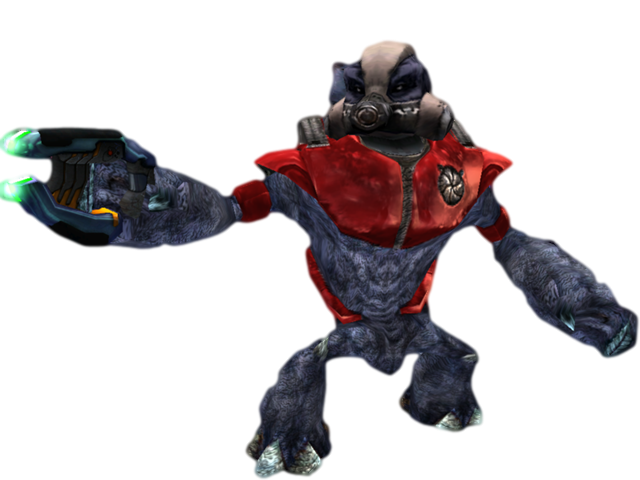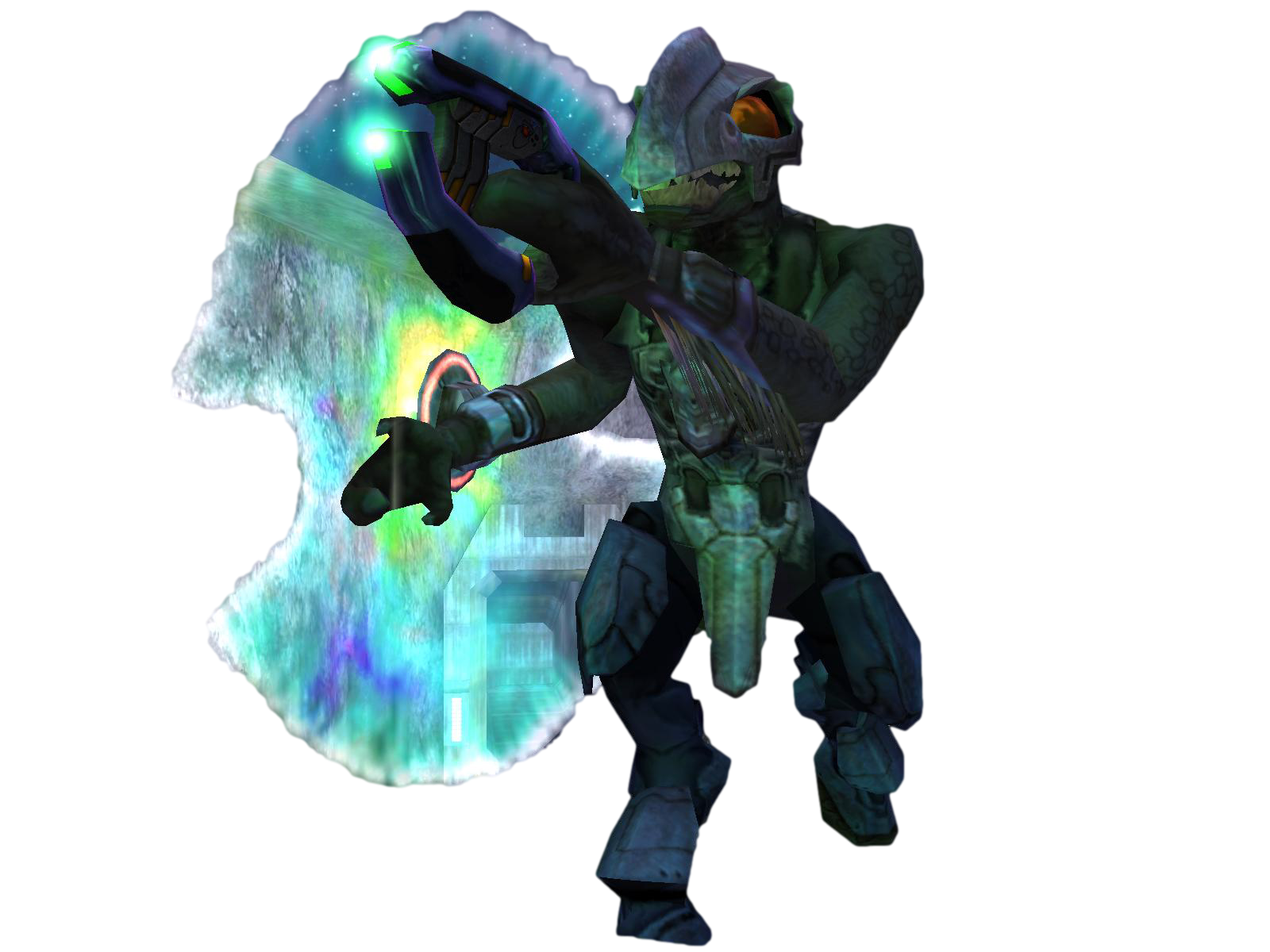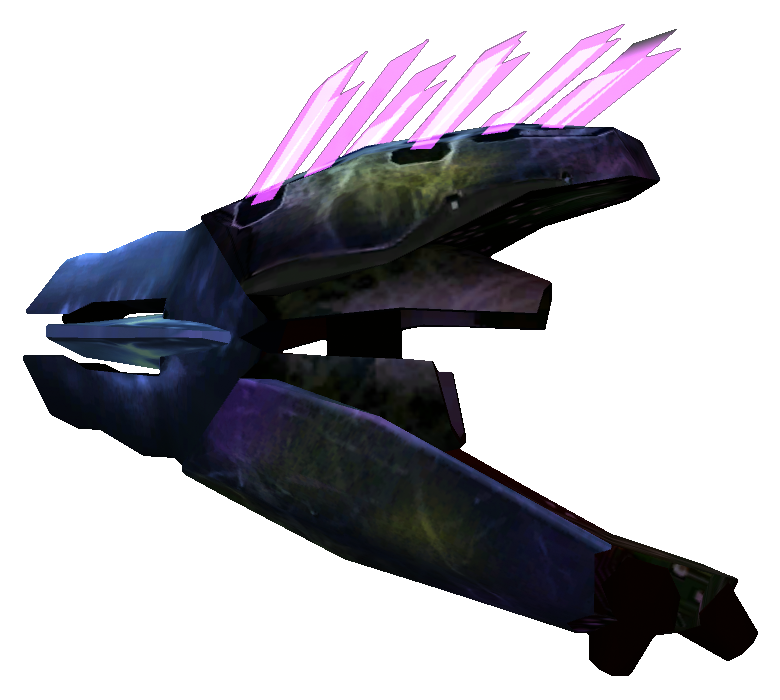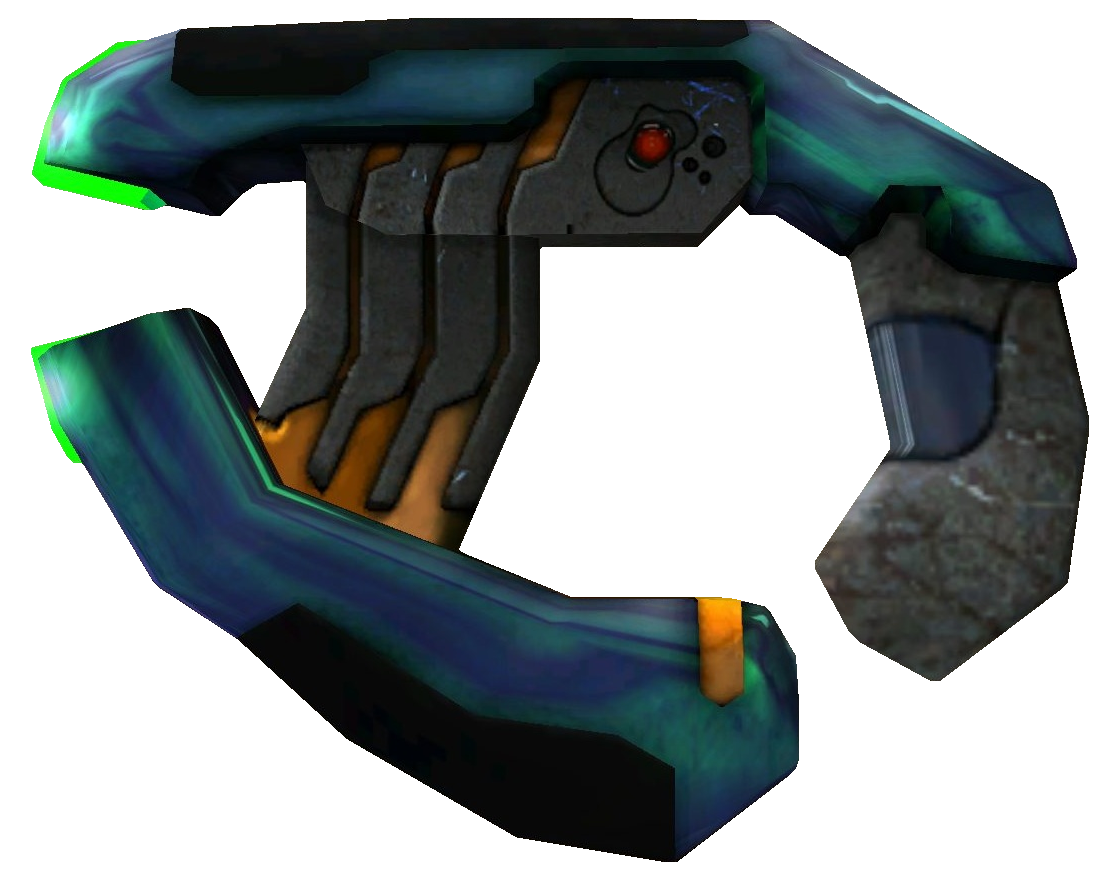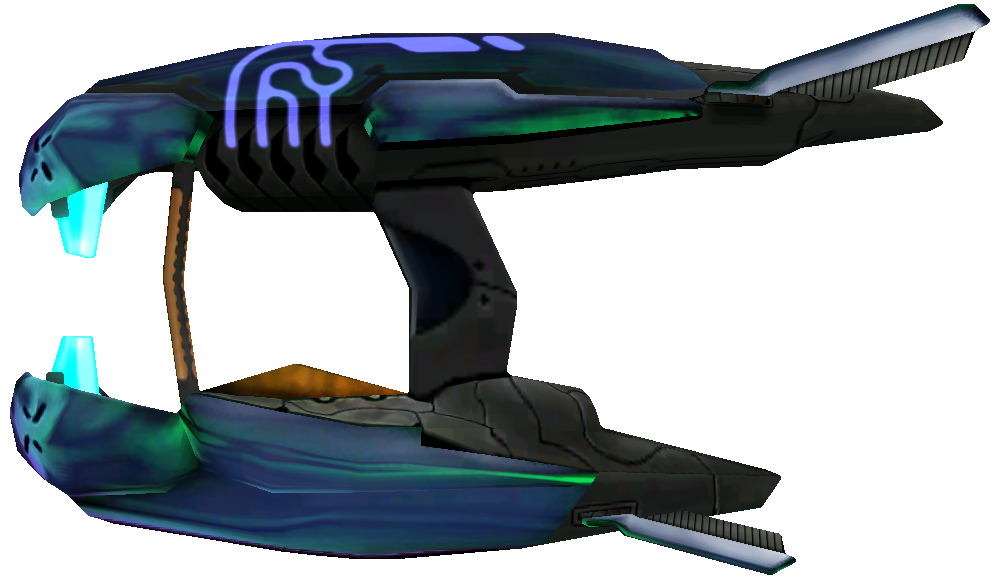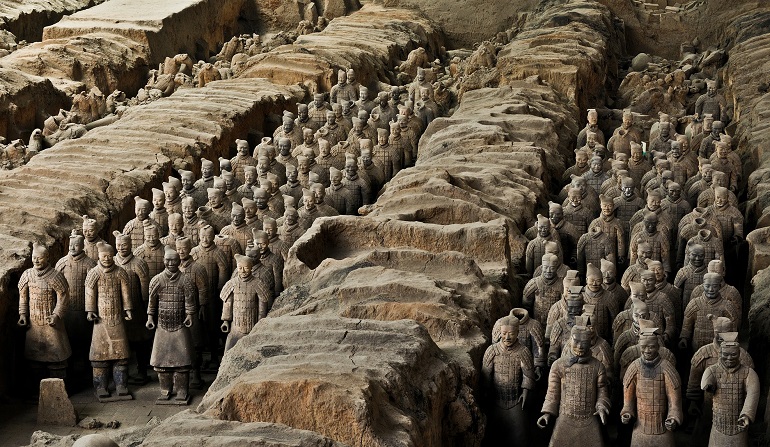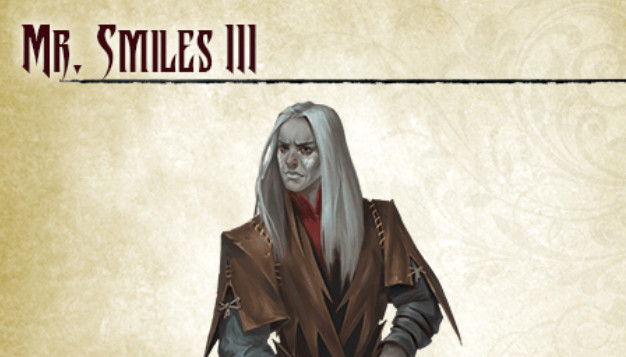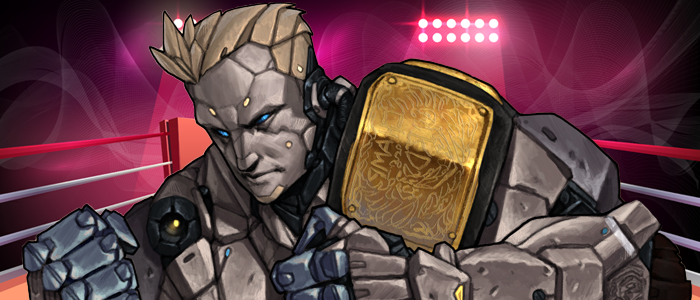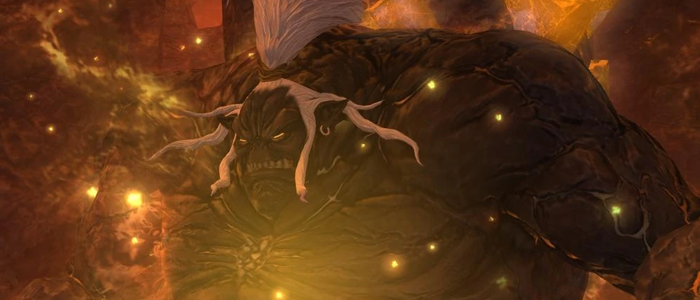Before you read this blog post, click on this link. Okay, now that the music is playing (or done) let’s move on.
I never grew up with an Xbox, but I definitely knew about Halo. I had family and friends that owned the game and I played it a lot over the years growing up. It’s fun and an obviously landmark title in gaming. I’ve been wanting to provide stats for the Halo enemies for some time, but one of the big things I wanted to do is also include a lot of the memorable weapons and items from the games alongside these enemies. I could have done so a long time ago, but when I learned that the Starfinder Armory was on its way, I decided I would wait. I wanted to see if that book included any weapon properties that would help me bring these weapons and items to life. Now that it’s here, we can finally take a look at part one of my Halo series.
Grunt CR 1
XP 400
N Small humanoid (unggoy)
Init +5; Senses darkvision 60 ft., low-light vision; Perception +10
DEFENSE
hp 15
ES 5
EAC 11; KAC 13
Fort +3, Ref +3, Will +1
Defensive Abilities recharge 2
OFFENSE
Speed 30 ft.
Melee slam +5 (1d6+2)
Ranged plasma pistol +8 (1d4+1)
STATISTICS
Str +1, Dex +4, Con +2, Int +1, Wis +0, Cha +0
Skills Perception +10
Languages Common
ECOLOGY
Environment any
Organization solitary, pair, or squad (3–10)
The unggoy are a species of aliens that are part of a collective unified aliens known as the Covenant Empire. Among the Covenant, the unggoy serve as laborers, slaves, and as cannon fodder in combat scenarios. The unggoy are typically cowardly and are poor warriors. They lack the tactical skill or aptitude of their fellow Covenant members and are known to flee upon the death of a commanding officer. Although they are lacking in skill, the unggoy are high in number. The Covenant takes advantage of these numbers and typically sends the unggoy to the front lines to attempt to overwhelm opposing forces. Due to their nature as cannon fodder, the unggoy have earned the nickname of grunts from humans.
Jackal CR 3
XP 51,200
N Small humanoid (kig-yar)
Init +5; Senses darkvision 60 ft., low-light vision; Perception +13
DEFENSE
hp 30
ES 10
EAC 14; KAC 16
Fort +5, Ref +5, Will +2
Defensive Abilities defense gauntlet, recharge 2
OFFENSE
Speed 30 ft.
Melee slam +8 (1d6+4)
Ranged needler +11 (1d4+3)
STATISTICS
Str +1, Dex +5, Con +2, Int +1, Wis +2, Cha +0
Skills Perception +13, Stealth +8
Languages Common
ECOLOGY
Environment any
Organization solitary, pair, or unit (3–4)
SPECIAL ABILITIES
Defense Gauntlet (Ex) A jackal can activate its wrist mounted plasma shield as a swift action. This shield grants it DR 5/—. When the shield absorbs 25 points of damage, it is destroyed and the jackal must wait 1 minute before it can activate the shield again.
The kig-yar are another member of the Covenant Empire. They serve the covenant as snipers, shock troopers, and scouts due to their superior senses. In combat, they typically stand behind grunts and use their excellent aim to attack foes from a distance. Most kig-yar employ the use of an energy shield which allows them to defend themselves from oncoming fire without interfering with their offensive capabilities. Similar to the unggoy, the kig-yar are prone to fleeing from combat when outclassed or outnumbered. Humans refer to them as jackals due to their appearance and scavenger nature.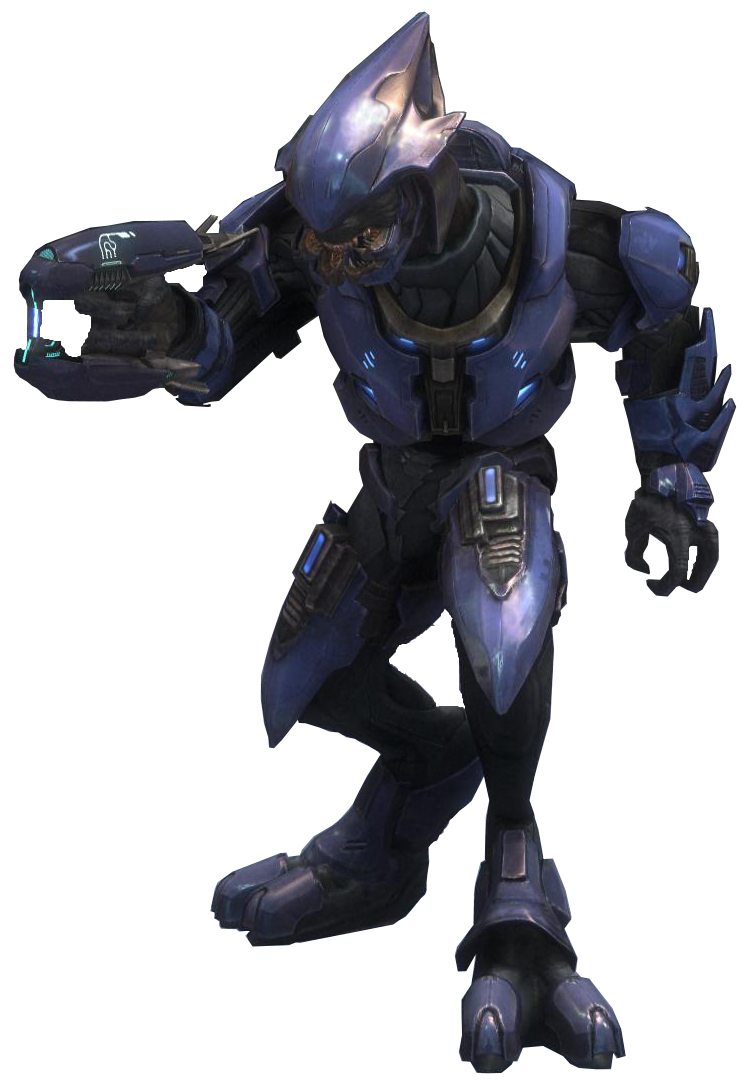
Elite CR 5
XP 51,200
N Medium humanoid (sanghelli)
Init +5; Senses darkvision 60 ft., low-light vision; Perception +11
DEFENSE
hp 50
ES 20
EAC 17; KAC 19
Fort +7, Ref +7, Will +4
Defensive Abilities recharge 5
OFFENSE
Speed 30 ft.
Melee energy sword +11 (1d6+9)
Ranged plasma rifle +11 (1d6+5)
STATISTICS
Str +4, Dex +5, Con +3, Int +1, Wis +2, Cha +1
Skills Intimidate +16, Perception +11
Languages Common
ECOLOGY
Environment any
Organization solitary, pair, or troop (3–6)
Among the highest ranked members of the Covenant Empire, the sanghelli are a proud, intelligent warrior race. They serve as the backbone of the Covenant military, acting as tactical leaders on the battlefield. They are highly skilled combatants, constantly on the move in battle, though not always keeping in the safety of cover. The sanghelli’s superior strength emboldens many of them to face combatants directly. The sanghelli’s ferocity and tactical precision in combat has led to humans referring to them as elites.
New Weapons
|
Weapon |
Level | Price | Damage | Range | Critical | Capacity | Usage | Bulk | Special |
| Needler |
4 |
2,750 | 1d3 P | 30 ft. | Erupt 1d8 F | 20 rounds | 1 | 1 |
Rapid 5 |
| Plasma Grenade |
4 |
850 | — | 20 ft. | — | Drawn | — | L |
Explode (3d6, E & F) |
| Plasma Pistol |
2 |
750 | 1d4 E & F | 20 ft. | — | 20 charges | 1 | L |
Boost; see text |
|
Plasma Rifle |
6 | 5,000 | 2d6 E & F | 20 ft. | Burn 1d6 | 40 charges | 1 | 1 |
Automatic |
Needler
The Type-33 Guided Munitions Launcher, also known as the needler, is a Covenant infantry weapon. The ammunition is a unique type of crystal that impale its target. The crystals contain a unique form of volatile gas. This gas detonates when multiple crystals strike the same target within a short period of time. If a target is struck by a needler at least 3 times within 1 round, the crystals detonate, dealing the critical hit effect.
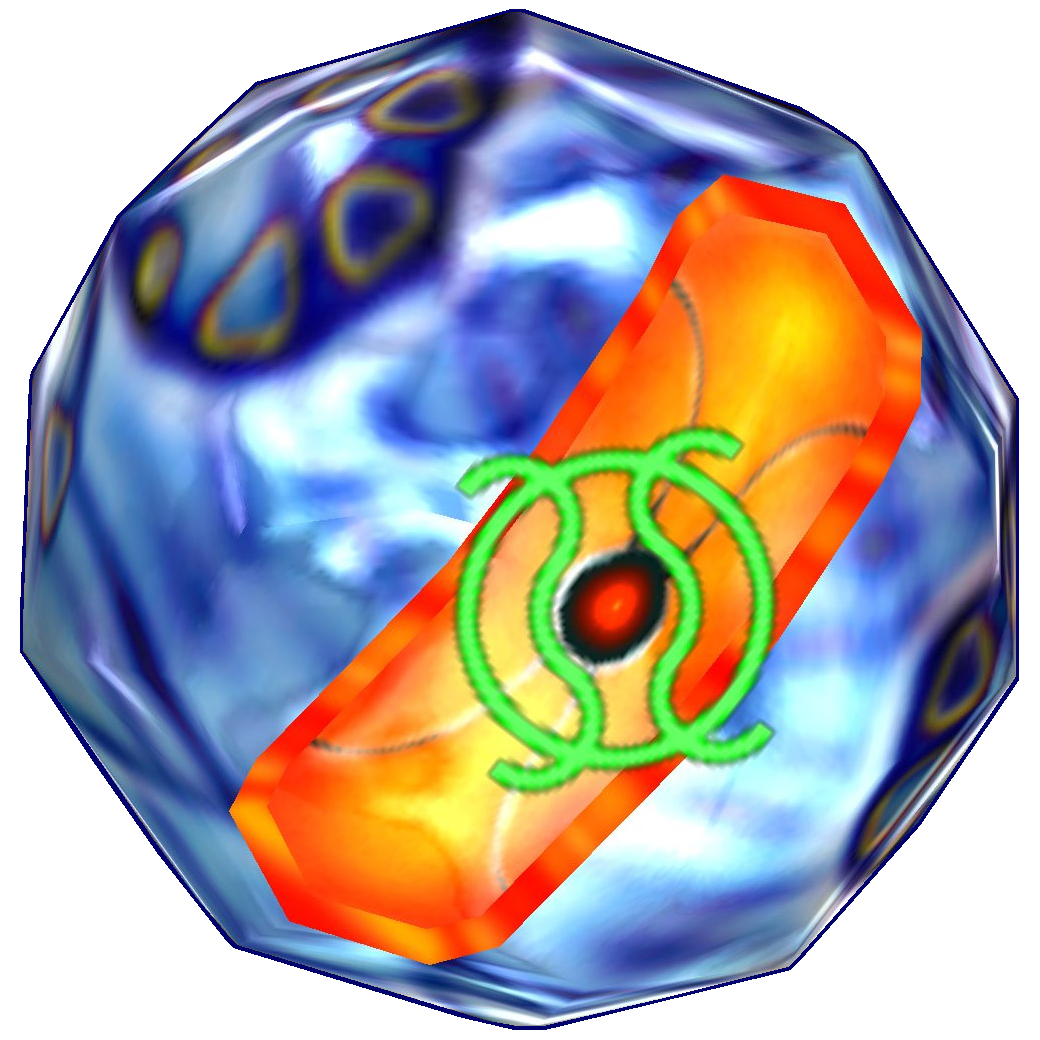
Plasma Grenade
The Type-1 Antipersonnel Grenade, also known as the plasma grenade, is a Covenant explosive device with the ability to stick to its target. Attacking with the plasma grenade requires a ranged attack against a target’s KAC. If the attack hits, the grenade explodes as normal, but deals damage only to the target. If the attack misses, the grenade becomes inert and is wasted.
Plasma Pistol
The Type-25 Directed Energy Pistol, also known as the plasma pistol, is a common Covenant firearm. Using the boost effect increases the damage die by one step form 1d4 to 1d6. Using this boost effect expends 5 charges.
Plasma Rifle
The Type-25 Directed Energy Rifle, commonly known as the plasma rifle, is a common infantry weapon. It is the firearm of choice for sanghelli warriors.
New Weapon Property
Rapid
A rapid weapon can fire multiple shots as a full attack. Instead of making two attacks, you can make a number of attacks as designated by the rapid property. Each attack beyond the second attack receives an additional –1 penalty to attack rolls.
New Critical Property
Erupt
The weapon’s ammunition violently detonates and deals the listed damage.
New Universal Creature Rule
Energy Shields
An invisible energy shield surrounds the creature, absorbing damage for the creature. These shield functions similar to hit points, but a creature with any energy shield available always takes damage to its energy shield first. An energy shield constantly renews and a creature with an energy shield also has a recharge rate. This recharge rate functions as fast healing except it only restores lost energy shield. Typically, a new creature has a total mix of hit points and energy shields equal to its recommend hit points based on the monster and NPC creation rules.
Format: ES 10; Defensive Abilities recharge 5
Monstrous Origins
There’s a lot going on this week! First of all, most of the enemies in Halo don’t have many unique abilities. A lot of their different nature, beyond their physiology, stems from the weapons that they use. As such, these stat blocks are kind of simple. Other than providing shields for jackals, there wasn’t much going on here mechanically. One thing I did do was bring back the energy shield rules I created for the Protoss some time back. It worked perfectly here! Covering the weapons was a little more involved. Most of the human weapons didn’t really require their own unique weapons as most can be replicated with existing Starfinder weapons. The Covenant weapons are a different story, though. Where I could, I tweaked existing properties, such as with the plasma pistol. For this one, I wanted it to deal more damage so I modified the boost property just a tad.
The needler was more of a challenge. There wasn’t any property that could replicate what it’s know for: sticking multiple needles that explode. I had to make some new rules! Unfortunately, the automatic property would fire too many attacks for my liking, so I created the rapid property. This allows a designer to put a limit as to just how many attacks you can do. I recommend using smaller damage dice for weapons with rapid. Next, I had to have a way for them to blow up. A critical hit effect seemed perfect, but none of them were really just a big amount of damage. Thus, I created the erupt property. It’s simple and effective. I then tied the two properties together in the weapon’s description to try to replicate how the needler works. The plasma rifle is very simple. It deals damage and can fire very quickly. There’s not much too it other than that I give it a bit more damage and a higher price. Finally, the plasma grenade was easy enough. I just made a more damaging grenade, but required it to hit a target to “stick.” The fact that it can only hit one target felt like a good reason for it to deal the increased damage. Obviously, there are a lot more items in the Halo series that could work well in Starfinder, but this article was long already. I felt like I could wait until next time to add more iconic equipment.
That’s it for this week! This series will continue next week with even more enemies and a look at some weapons and items from Halo 2. If you end up introducing this content into your game or you have any request for a future Monstrous Physique, please drop me a line at KnowDirection@hotmail.com.

